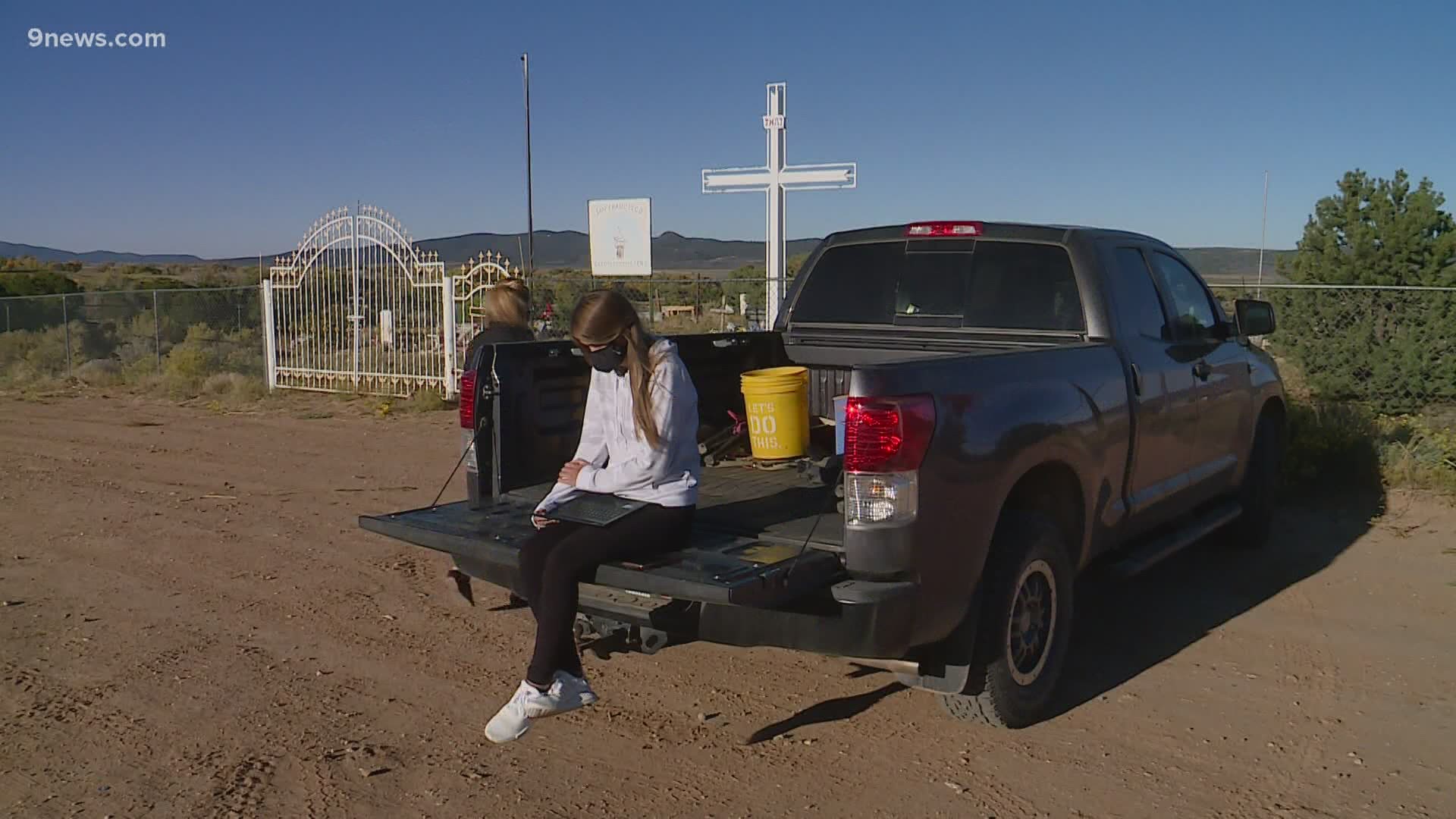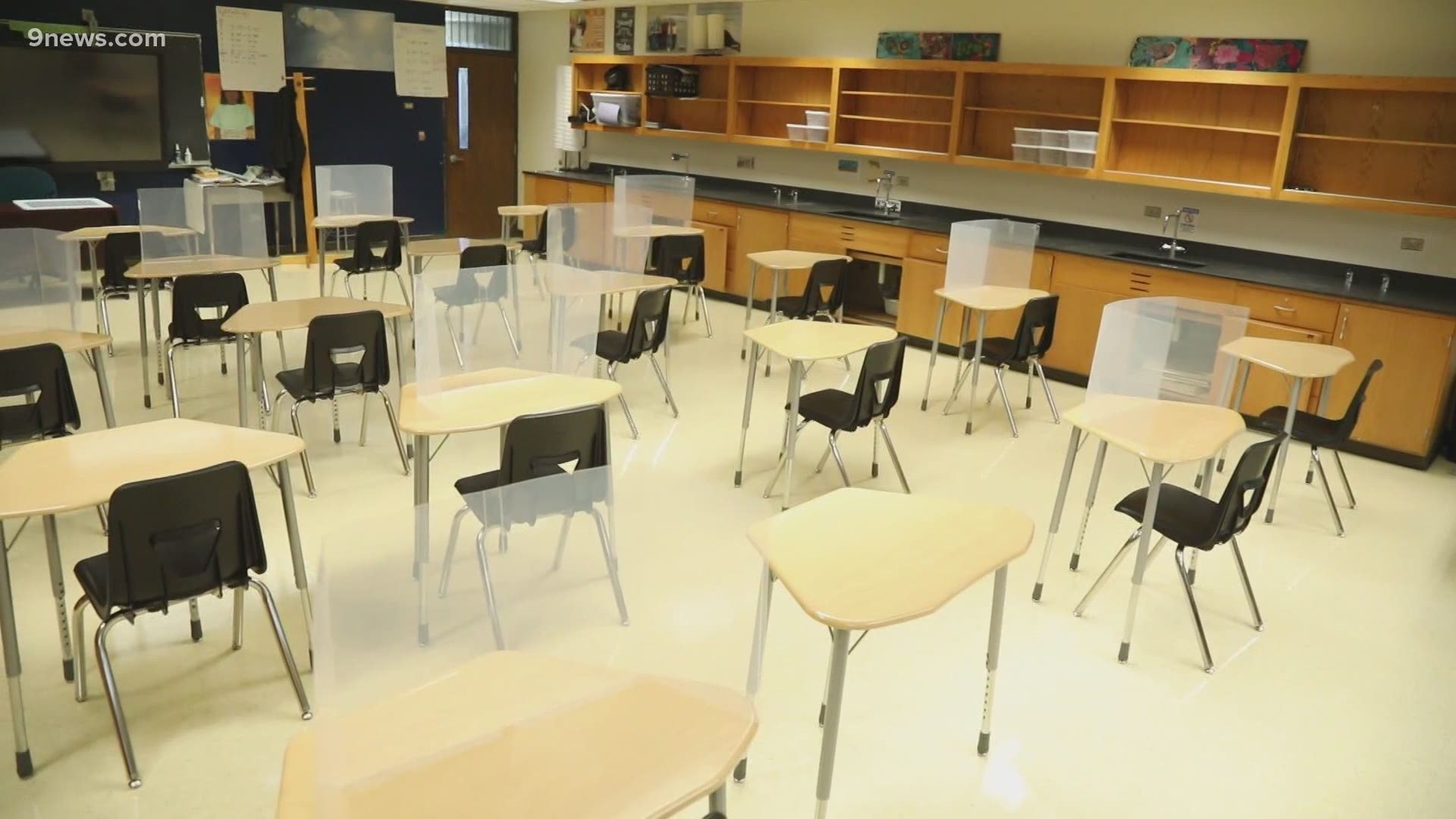COSTILLA COUNTY, Colo. — The town of San Luis in Southern Colorado’s Costilla County has always struggled with internet access because of the socioeconomic landscape and physical terrain.
With the pandemic forcing students out of classrooms and into remote learning, the effects of the pervasive connectivity problem are now coming to the forefront.
“This is probably the worst I’ve ever done in school,” high school sophomore Carmelita Rael said. “It’s really hard.”
Carmelita and her mother Kimba Rael go to a cemetery down the street from their home just outside of San Luis so Carmelita can log into her remote classes.
“Ever since I was little, my mom and dad [would] come up here when they needed to get service or a signal to do stuff," Carmelita Rael said.

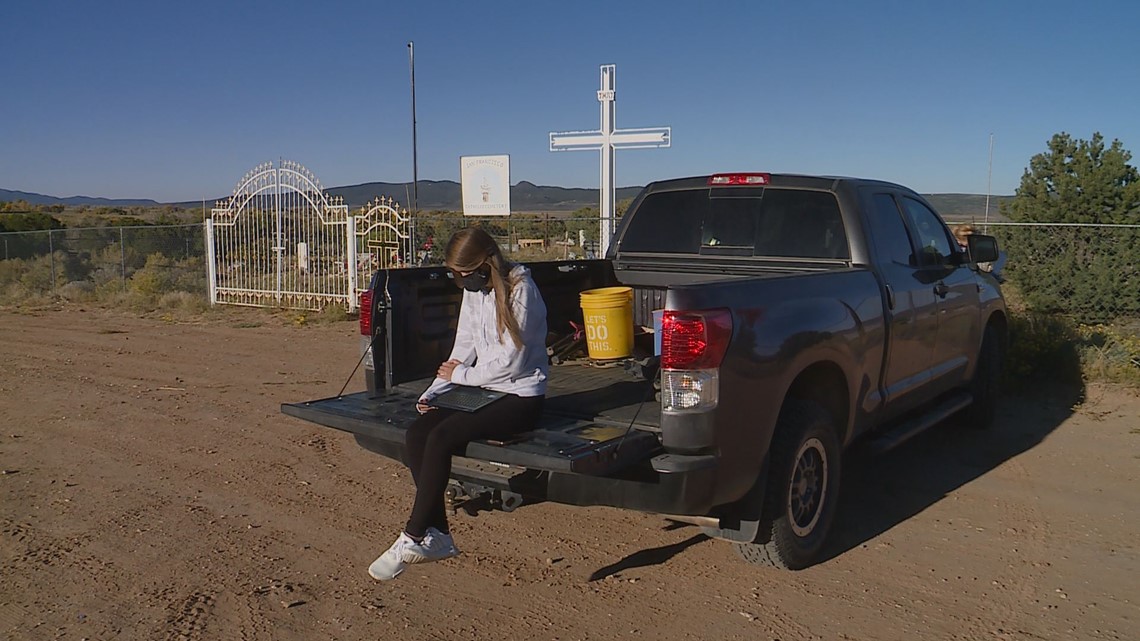
The Raels use a satellite for internet service at their ranch, because it’s the only way they can get internet access.
The town has fiber optic cables that reach homes situated in the center of town. Other residents have to rely on satellite networks or their line-of-sight to a mountain that holds San Luis’ only cell towers.
“I feel like the pandemic has really heightened the issue because of the need for remote learning,” Kimba Rael said.


She is also the principal of the town’s only school, the Centennial School District.
“Even just trying to access assignments and work on projects and things like that when we’re in a normal school year, it’s always a challenge." Kimba Rael said. "And it just doesn’t feel fair to me.”
Almost 60% of the district’s about 200 pre-kindergarten through 12th grade students do not have reliable internet, or do not have internet access at all, according to a survey the district sent to families.
For most of those respondents, the landscape makes it difficult to find a good connection, but the survey also found about 43% of those families simply could not afford to be connected.
Costilla County is the least-connected county in the state of Colorado. Almost 40% of households do not have broadband service, according to the 2018 Census Bureau American Community Survey. That same survey found that 32% of households didn't have a computer.

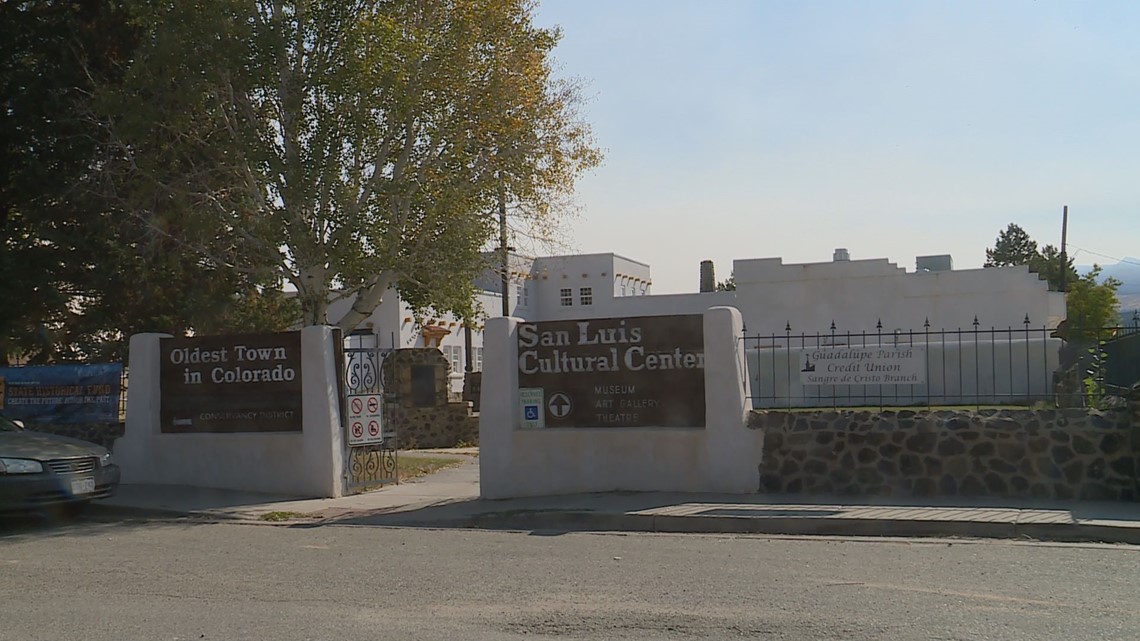
“Every day that we’re on remote, we lose ground,” the district’s superintendent, Toby Melster, said. “It’s not the fault of these students, and it’s not the fault of these teachers. I want to believe everyone understands that in-person instruction is the best mode of instruction, but we made a decision to not do it right now.”
The district started the school year off fully remote but began hybrid learning in the second quarter.
“Our teachers have done a tremendous job of coordinating, collaborating, trying not to just overload our students and our families with Zoom and online learning, Melster said. “The logistics of it, it’s amazing, and it’s frustrating.”

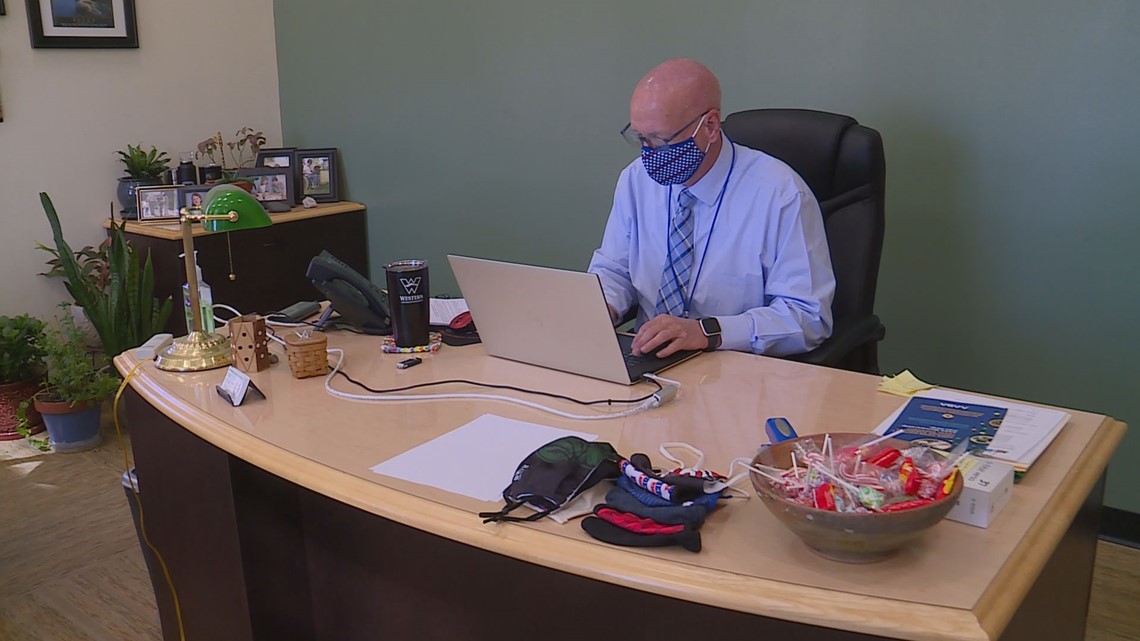
Connectivity has continued to be an issue, according to Melster, even with students spending some of their time in the classroom.
“I’m working with our IT service provider and trying to find a solution, which takes time,” Melster said. “It takes money. But it also means being patient, being flexible, being understanding.”
An easy fix would be hotspots, but most hotspot donations the district has received have not proven to be helpful with the town’s limited cell infrastructure.
The district’s goal is to get a mesh network installed in San Luis by early next year.
Paul Hendricksen, a senior engineer with the district’s IT provider, CMS IP Technologies, described how that solution would work.
“We have fiber coming into the school,” Hendricksen said. “That fiber has a limited amount of scope and bandwidth. We’re going to ask for more of that…get antennas at a higher point at the school, and broadcast [the signal] out to places in town that we’re allowed to use.”
This would give households access to the school’s wifi connection, said Hendricksen.
“Think of it coming into your home," Hendricksen said. "You want to get Wi-Fi from downstairs to upstairs, you get a repeater. We’re doing the same exact thing but on a long, long-distance.”
This solution comes with a hefty price tag: Potentially $750,000. The state has millions of dollars in grant money they can distribute, and potentially more in the coming months.
The district hopes to use that money, as well as some of their budget, to help close their connectivity gap.
“We stay because this is our home,” Kimba Rael said. “There’s culture and there’s community that you can’t get anywhere else, and that’s important to us to raise our family here and have our daughter be a part of it and be connected to her roots.”
The concern, though, is how a lack of Wi-Fi connectivity may eventually define future generations.

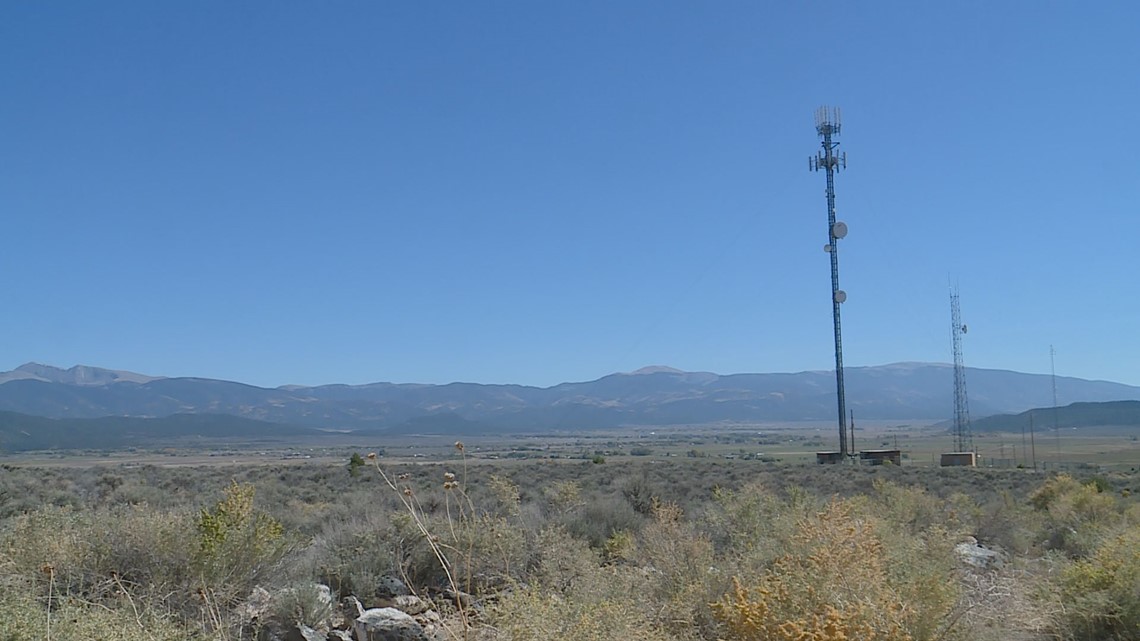
“This isn’t just a Centennial [School District] problem,” Meltser said. “This is Centennial, Center, Alamosa, Montrose, the front range, the western slope, you name it. It’s an issue across the state.”
Throughout the month of November, 9NEWS will be looking at Disparity in Colorado in many different areas, from education to healthcare access, and how disparity within the criminal justice system impacts people of color in Colorado.
Suggested Videos| Voices of Change

